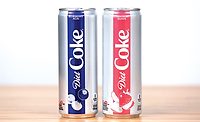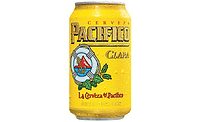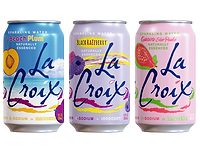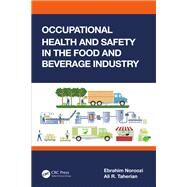2021 State of the Beverage Industry: CSD’s benefit from familiarity, flavor choices
Mature category seeing steady growth

While carbonated soft drinks (CSDs) — a juggernaut when it comes to dollar sales — had previously lost ground to better-for-you (BFY) beverages such as bottled water, the $30.5 billion CSD category grew 11.4 percent in multi-outlets for the 52 weeks ending Jan. 23, according to data from New York-based Nielsen. More recent data from Chicago-based Information Resources Inc. (IRI) notes that carbonated beverages remain a top performer with dollar sales of $32 billion and a 9% year-over-year increase in multi-outlets for the 52 weeks ending May 16.
The CSD category is “riding on the heels of two years of category growth … expected to extend into 2021” states Chicago-based Mintel’s May 2020 “Carbonated Soft Drinks: Incl Impact of COVID-19 – US” report.
In Beverage Industry’s April eMagazine, the report noted that the mature, top-heavy category is largely dominated by two major players, The Coca-Cola Co., Atlanta, and PepsiCo, Purchase, N.Y., who have been the catalysts for growth largely attributed to successful flavors, BFY products and packaging innovation.
“In the challenging economic times that may lie ahead, while value-focused offerings may seem like an alternative, brands are insulated by familiarity, dedication and complex, solid distribution channels. The top-heavy carbonated soft drink category has a unique advantage in this equally unique time: deeply rooted connections with not only their most engaged fans, but also with less frequent users,” the report states. “Decades of legacy brand building centered not only on refreshment and enjoyment, but also community and family, are likely paying off in spades as consumers crave comfort, normalcy and nostalgia.”

Yet, Jacqueline Hiner, lead analyst for New York-based IBISWorld Inc., suggested that products that support health and wellness are taking share away from carbonated soft drinks.
“Overall, declines in high-fructose corn syrup and sugar consumption and growth in healthy eating have continued to pressure sales according to our research,” Hiner explained in the April eMagazine. “Although there has been some support from carbonated waters, as well as a surge in demand during the pandemic, this has not been enough to make up for declines in traditional sugary CSDs.
“… Meanwhile, demand is rising for specialized products or those that are made with less processed ingredients, such as craft sodas made with cane sugar or carbonated beverages that lack sweeteners altogether such as Spindrift,” she continued. “CSD producers have increasingly released heathier products to appeal to increasingly health-conscious downstream markets.”
Yet, several brands are releasing summer-inspired flavors to whet consumers’ appetites for the taste of the tropics. MTN DEW, a brand of PepsiCo, re-released its original Baja Blast and Baja Blast Zero Sugar at convenience stores, as well as unveiled two new flavors: Baja Flash, which delivers the flavor with a tropical kick of pineapple and coconut; and Baja Punch features a twist of punch with hints of orange, cherry and pineapple.

Image courtesy of Keurig Dr Pepper
Additionally, Taco Bell is adding a frozen experience for its guests with a new Baja Colada Freeze, a frozen slushy drink featuring the unique taste of Baja Blast blended with smooth, sweet tropical cream. MTN DEW also is committed to making this a summer to remember through its 100 Days of Baja, which is offering DEW Nation daily rewards for a full 100 days through www.100daysofbaja.com, culminating in a $100,000 grand-prize giveaway.
When it comes to flavor, beverage companies are striving for more “sizzle and pop” innovation within the CSD category. Earlier this year, the Coca-Cola Co. released Coca-Cola with Coffee and Coca-Cola with Coffee Zero Sugar. Infused with Brazilian coffee, the full-sugar variety is available in three signature flavors, Dark Blend, Vanilla and Caramel, while the zero-sugar counterpart comes in Dark Blend and Vanilla. All the hybrid beverage varieties are shelf-stable and contain 69 mg of caffeine in each 12-ounce slim can.
Sugar reduction also is proliferating throughout the CSD category. Dr Pepper, a brand of Keurig Dr Pepper, Plano, Texas, launched Dr Pepper Zero Sugar, which celebrates the blend of its signature 23 flavors in a zero-sugar soda. The new variety now is available nationwide in Original, Cherry and Cream Soda flavors. Dr Pepper Zero Sugar is available in 20-ounce bottles, 2-liter bottles, six-packs of 0.5-liter bottles and 12-packs of 12-ounce cans.
Noting that CSDs are a massive category — the second largest beverage category in the country on a volume basis, Gary Hemphill, managing director of research at New York-based Beverage Marketing Corporation (BMC), noted that the category has struggled of late because consumers are moving toward healthier refreshment and craving variety.
Although volume sales of CSDs has been sluggish for a few years, CSDs have been further impacted by the pandemic, more so than other refreshment beverage categories, Hemphill said in Beverage Industry’s April eMagazine.
“The category was hit harder than most by the shutdowns of restaurants and other on-premise establishments,” he said. “We’re forecasting another decline in carbonated soft drink volume in 2021.”
Yet, Jennifer Mapes-Christ, publisher of food and beverage research for Packaged Facts, Rockville, Md., detailed that shifting consumer patterns and interest in at-home cocktail making are bolstering CSD interest.
“All this home consumption has led to increased desire for novelty, as consumers might have discovered new flavors or be otherwise shaken out of their beverage routines at a restaurant or bar,” she explained in the April eMagazine. “This has left consumers willing to seek out new flavors and try new beverages, including new carbonated types.” There’s also been more consumers using CSDs to make cocktails or mocktails, she adds.
Noting the growth of the mixer category, on March 1, PepsiCo launched its Neon Zebra line in four non-alcohol flavors: citrus-flavored Margarita mix, strawberry-lime-flavored Strawberry Daiquiri mix, lime-mint-flavored Mojito mix and a lemon-flavored Whiskey Sour mix, the company says.
Although beverage-makers innovate with flavors, the staples hold strong. Cola was the largest sub-segment, ringing up sales of $13 billion, an increase of 12.6 percent for the 52 weeks ending Jan. 23, Nielsen data reports. Other top performers were Citrus, at $4.6 billion and an 8.7 percent increase; Pepper, which saw a 12.2 percent increase and sales totals of $3.4 billion; Lemon Lime with sales of $2.9 billion, a 12.8 percent rise; and Ginger Ale saw sales of $1.4 billion, an increase of 13.2 percent.
To keep the burgeoning CSD category evolving, experts recommend plenty of flavor innovation, varieties and offering healthier products, including unsweetened carbonated waters.
“Seasonal and limited-edition flavors appeal to [consumers],” Packaged Facts’ Mapes-Christ said in Beverage Industry’s April eMagazine. “Consumers are also looking for a way to get a boost in their day and varieties that blur into the energy drink category are a way for consumers to get that from flavors not associated with coffee.”
Looking for a reprint of this article?
From high-res PDFs to custom plaques, order your copy today!











